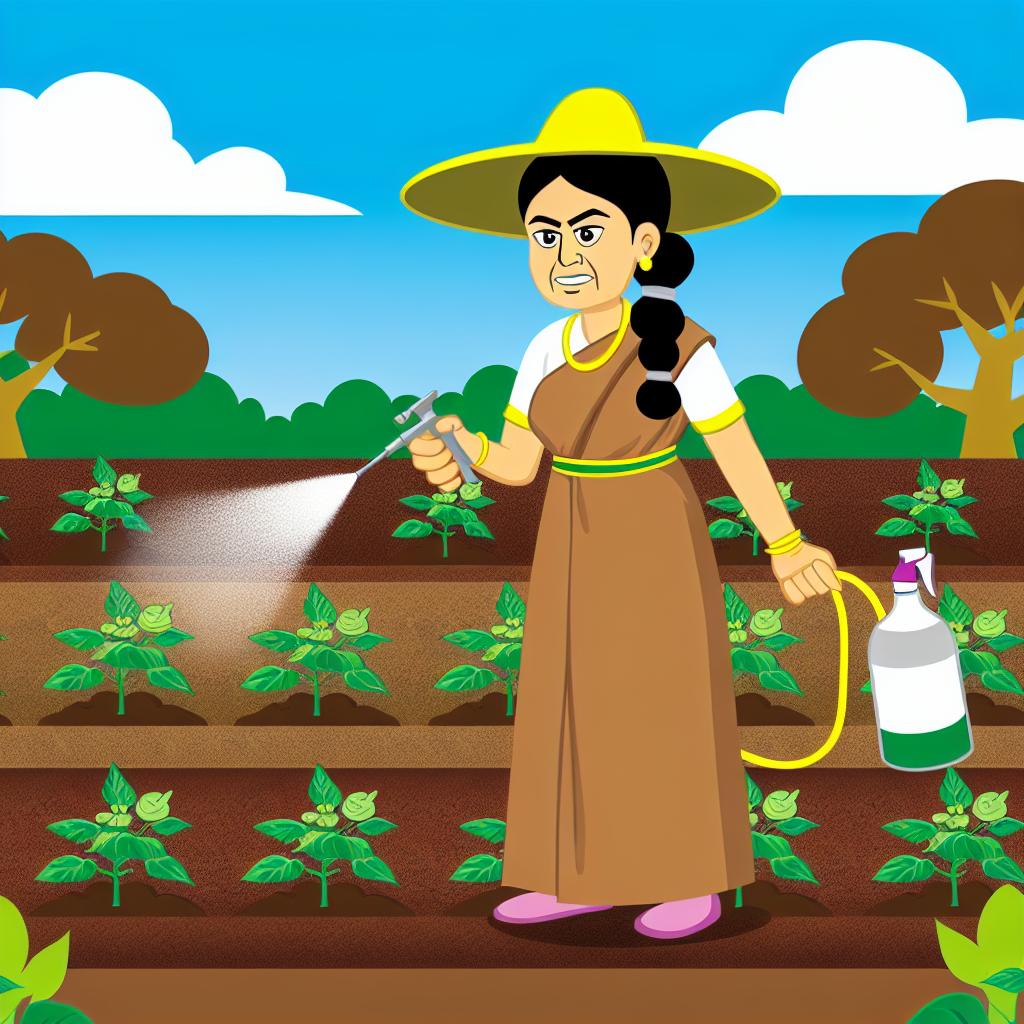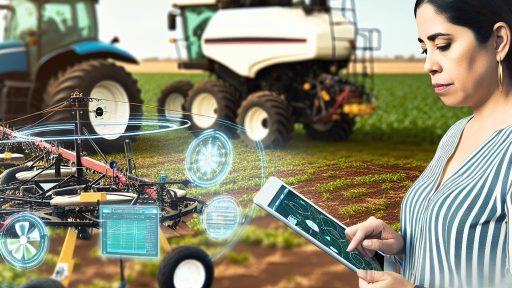Introduction to Eco-Friendly Pest Management Concepts
Eco-friendly pest management focuses on sustainable farming practices.
This approach reduces reliance on chemical pesticides.
Moreover, it protects beneficial insects and local ecosystems.
Understanding Eco-Friendly Practices
Integrating eco-friendly practices promotes long-term agricultural health.
Farmers often use natural predators to control pests.
For instance, ladybugs can effectively manage aphid populations.
The Role of Biodiversity
Biodiversity acts as a natural pest control mechanism.
Diverse plant species attract various beneficial insects.
This variety creates a more resilient ecosystem.
Subsequently, it reduces the likelihood of pest outbreaks.
Utilizing Cultural Controls
Cultural controls involve changing farming practices to deter pests.
Crop rotation is an effective cultural strategy.
It disrupts pest life cycles and aids in soil health.
Furthermore, intercropping can confuse pests and limit their spread.
Natural Pesticides and Organic Solutions
Natural pesticides offer safer alternatives to traditional chemicals.
Transform Your Agribusiness
Unlock your farm's potential with expert advice tailored to your needs. Get actionable steps that drive real results.
Get StartedNeem oil is a well-known organic solution for pest control.
Garlic spray can also deter a variety of garden pests.
Farmers can explore numerous plant-based solutions for pest issues.
Monitoring and Management Techniques
Effective monitoring of pest populations is essential.
Regular inspections help farmers respond to pest issues promptly.
Using traps can provide valuable data on pest activity.
Subsequently, farmers can implement targeted management strategies.
Overview of Common Pests in Sustainable Farming
Introduction to Agricultural Pests
Pests pose significant challenges to sustainable farming practices.
Understanding common pests helps in developing effective management strategies.
These pests can damage crops and reduce yields.
Moreover, they can affect the overall health of the farm ecosystem.
Common Types of Pests
A variety of pests threaten sustainable farms.
Insects, rodents, and fungi are among the most common.
- Aphids can weaken plants by sucking sap.
- Spider mites leave tiny webs and cause leaf damage.
- Cutworms can sever young plants at the soil level.
These pests often reproduce rapidly, making control challenging.
Identifying signs of infestations early leads to better management.
Effects of Pests on Crops
Pest infestations can severely impact crop yields.
Their feeding habits directly damage plant tissues.
This can lead to stunted growth and reduced harvests.
Furthermore, certain pests may transmit diseases to crops.
Preventive Measures for Pest Control
Effective pest management begins with prevention.
Crop rotation can disrupt pest life cycles and minimize infestations.
Understanding pest behavior helps to create barriers against them.
Additionally, promoting natural predators can naturally help manage pests.
The Importance of Biodiversity
Biodiversity plays a crucial role in pest management.
Showcase Your Farming Business
Publish your professional farming services profile on our blog for a one-time fee of $200 and reach a dedicated audience of farmers and agribusiness owners.
Publish Your ProfilePlanting diverse crops can attract beneficial insects.
These insects can prey on harmful pests, reducing their populations.
Also, maintaining healthy soil supports diverse microbial communities.
This contributes to plant resilience against pest attacks.
Benefits of Eco-Friendly Pest Management for Soil Health
Enhancing Soil Microbial Diversity
Eco-friendly pest management increases soil microbial diversity.
Microbes play a vital role in nutrient cycling.
Furthermore, a diverse microbial community enhances plant health.
Improving Soil Structure
Healthy soil supports better root development.
This leads to improved water retention and drainage.
As a result, crops become more resilient to drought.
Reducing Chemical Residue
Using natural pest control methods minimizes chemical residues.
This helps maintain soil health and ecosystem balance.
Consequently, soil organisms thrive without harmful chemicals.
Promoting Organic Matter Decomposition
Eco-friendly practices enhance the decomposition of organic matter.
Decomposed organic matter enriches soil fertility.
In addition, it provides a stable source of nutrients for plants.
Supporting Sustainable Crop Rotation
Implementing eco-friendly strategies facilitates effective crop rotation.
Crop rotation helps break pest cycles naturally.
Moreover, it boosts soil nutrients and prevents erosion.
Encouraging Natural Predators
These strategies foster habitats for natural predators.
Naturally occurring pests keep harmful pest populations in check.
This balance reduces the need for synthetic pesticides.
Uncover the Details: Utilizing Drones For Precision Farming Applications
Cultural Practices to Prevent Pest Infestations
Crop Rotation
Crop rotation disrupts pest life cycles effectively.
Each crop type attracts different pests.
By changing crops annually, pests struggle to adapt.
This practice improves soil health as well.
Companion Planting
Companion planting involves growing different plants together.
Some plants repel harmful insects naturally.
Others attract beneficial insects that prey on pests.
For instance, marigolds deter nematodes effectively.
Proper Sanitation
Maintaining cleanliness in the farm area is crucial.
Remove debris and leftover crops regularly.
These can harbor pests and diseases.
Implementing proper sanitation reduces pest habitats.
Using Resistant Varieties
Select pest-resistant crop varieties whenever possible.
These plants can withstand pest attacks better.
This method minimizes pesticide reliance significantly.
Farmers can consult local agricultural agencies for recommendations.
Monitoring and Identifying Pests
Regular monitoring allows early pest detection.
Showcase Your Farming Business
Publish your professional farming services profile on our blog for a one-time fee of $200 and reach a dedicated audience of farmers and agribusiness owners.
Publish Your ProfileFarmers should identify pests promptly to manage them.
Establishing traps can help in monitoring effectiveness.
Also, documenting pest sightings aids in strategizing.
Effective Water Management
Water management significantly impacts pest populations.
Overwatering can lead to root rot and attract pests.
Implementing drip irrigation can conserve water and reduce moisture.
This approach minimizes conditions conducive to pest infestations.
See Related Content: Diversifying Revenue Streams In Agricultural Enterprises Successfully
Natural Predators and Biological Control Methods
The Role of Natural Predators
Natural predators are essential in maintaining pest populations.
They provide a natural form of pest control.
Common examples include ladybugs, lacewings, and predatory beetles.
Farmers can release these beneficial insects to enhance control.
Furthermore, natural predators reduce the need for chemical pesticides.
This approach fosters a healthier ecosystem on the farm.
Enhancing Biodiversity
Enhancing biodiversity supports natural pest management.
Diverse plant species attract various beneficial insects.
This strategy creates a more resilient farming system.
Crop rotation also plays a vital role in pest control.
It disrupts pest life cycles, making it harder for them to thrive.
Farmers should consider integrating cover crops into their systems.
Cover crops can provide habitat for beneficial organisms.
Biological Control Methods
Biological control employs living organisms to manage pests.
One common method involves the use of parasitoids.
These are insects that lay their eggs inside pest insects.
As a result, the parasitoids help reduce pest populations significantly.
Bacteria and fungi can also serve as biological controls.
They target specific pests while leaving beneficial insects unharmed.
Implementing Successful Strategies
Farmers should develop a comprehensive pest management plan.
This plan must incorporate different biological control methods.
Investing in education about beneficial insects is also crucial.
Workshops and training can help farmers identify natural predators.
Ultimately, successful pest management relies on observation and adaptation.
Farmers must continuously assess and adjust their strategies.
Uncover the Details: Overcoming Common Supply Chain Challenges in Farming
Organic Pesticides: Types and Application Techniques
Introduction to Organic Pesticides
Organic pesticides are essential for sustainable farming practices.
They aim to control pests while minimizing environmental impact.
Farmers use these products to protect crops without synthetic chemicals.
Types of Organic Pesticides
Several types of organic pesticides exist in the agricultural market.
These include botanical pesticides, microbial pesticides, and mineral-based products.
Botanical Pesticides
Botanical pesticides derive from plants and their extracts.
Showcase Your Farming Business
Publish your professional farming services profile on our blog for a one-time fee of $200 and reach a dedicated audience of farmers and agribusiness owners.
Publish Your ProfileCommon examples include neem oil and pyrethrum.
Farmers often use these products for their potency and low toxicity.
Microbial Pesticides
Microbial pesticides contain naturally occurring microorganisms.
Bacillus thuringiensis (Bt) is a notable example.
This bacterium targets specific pest species while being safe for beneficial insects.
Mineral-Based Pesticides
Mineral-based pesticides utilize inorganic compounds to manage pests.
Diatomaceous earth and sulfur are popular choices in this category.
They work by damaging the exoskeletons of insects or disrupting respiration.
Application Techniques for Organic Pesticides
Proper application techniques maximize the effectiveness of organic pesticides.
Farmers should consider the timing, method, and environmental conditions.
Timing of Application
Applying pesticides at the right time is crucial for pest control.
Farmers should monitor pest populations and apply treatments accordingly.
Timing applications to coincide with pest life cycles enhances effectiveness.
Application Methods
Various methods exist for applying organic pesticides effectively.
- Spraying is the most common technique used by farmers.
- Soil drenching allows for targeted applications in the ground.
- Drenching foliage offers direct contact with pests hiding on plants.
Environmental Considerations
Assessing environmental conditions is key to successful applications.
Weather plays a significant role in pesticide efficacy.
Farmers should avoid applications during windy or rainy conditions.
Safety Measures in Using Organic Pesticides
Even organic pesticides require careful handling to ensure safety.
Farmers must wear appropriate protective gear during applications.
Following label instructions helps ensure correct usage and safety.
Delve into the Subject: Niche Markets and Opportunities for Farm Diversification

Integrating Technology in Eco-Friendly Pest Monitoring
The Role of Technology in Pest Management
Technology plays a crucial role in modern pest management.
It enhances the efficiency of monitoring pest populations.
Farmers now utilize advanced tools for real-time data collection.
These technologies minimize the reliance on chemical treatments.
Types of Monitoring Technologies
Farmers can choose from various monitoring technologies.
- Drones provide aerial surveillance of crops.
- Sensors detect changes in soil and plant health.
- Mobile apps offer tracking and reporting features.
- Camera traps help identify pest species effectively.
Benefits of Technology Integration
Integrating technology offers several advantages.
It allows for targeted interventions rather than blanket treatments.
This precision reduces pesticide usage significantly.
In turn, it lowers environmental impact and cost.
Data Analysis and Decision Making
Effective data analysis is vital for successful pest management.
Farmers can analyze data to identify pest trends over time.
This information aids in making informed decisions.
Utilizing predictive analytics further enhances strategy planning.
Case Studies of Successful Implementation
Many farms have successfully integrated technology for pest monitoring.
Green Valley Farms adopted drones to monitor pest activity.
They reported a 30% reduction in pesticide use.
Similarly, Cedar Grove uses sensors to optimize their pest management.
They observed improved crop yields and healthier plants.
Case Studies: Successful Eco-Friendly Pest Management in Farms
Cloverhill Farm: Integrated Pest Management
Cloverhill Farm implemented an integrated pest management system.
Showcase Your Farming Business
Publish your professional farming services profile on our blog for a one-time fee of $200 and reach a dedicated audience of farmers and agribusiness owners.
Publish Your ProfileThis approach combines cultural, biological, and chemical practices.
They focus on reducing pesticide use while improving crop health.
For instance, they attract natural predators to control pests.
This strategy significantly decreased insect populations without harming beneficial species.
Sunny Acres: Companion Planting
Sunny Acres adopted companion planting to manage pests organically.
They paired marigolds with tomatoes to deter nematodes and aphids.
As a result, their tomato yield increased while pest levels declined.
This practice enhances soil health and promotes biodiversity.
Farmers at Sunny Acres noted improved pollination as well.
Green Valley: Organic Insecticides
Green Valley Farms transitioned to organic insecticides to protect crops.
They utilize neem oil and insecticidal soaps effectively.
These treatments are eco-friendly and break down quickly in the environment.
Consequently, their pest management costs decreased significantly.
Farmers reported higher profits and better quality produce.
Meadow Creek: Crop Rotation
Meadow Creek employs crop rotation to disrupt pest life cycles.
This method reduces pest populations and enhances soil fertility.
Farmers noticed fewer pest outbreaks each season.
Additionally, rotating crops leads to diverse nutrient profiles in the soil.
This practice fosters sustainable farming practices over the long term.
Highland Farm: Encouraging Beneficial Insects
Highland Farm encourages the presence of beneficial insects in their fields.
They plant wildflower strips to attract pollinators and predatory insects.
This method has effectively reduced aphid and caterpillar populations.
Farmers appreciate the increased pollination benefits as well.
Overall, this strategy has strengthened their ecosystem health significantly.
Challenges and Limitations of Implementing Eco-Friendly Solutions
Cost Considerations
Implementing eco-friendly pest management can require significant initial investment.
Farmers may face higher upfront costs for organic materials and natural pest solutions.
Additionally, many eco-friendly methods may not yield immediate financial returns.
Consequently, farmers might hesitate due to budget constraints.
Knowledge and Expertise Requirements
Successful eco-friendly pest management requires in-depth knowledge and training.
Many farmers are unfamiliar with these approaches, impacting adoption rates.
Access to educational resources often remains limited in rural areas.
Thus, a lack of expertise can deter effective implementation.
Market Demand and Consumer Behavior
In some regions, consumers still prioritize cost over sustainability.
This demand influences farmers to lean towards conventional pest control methods.
Consequently, market dynamics may not favor eco-friendly products.
Farmers may struggle to justify eco-friendly practices without clear economic incentives.
Regulatory Barriers
Complex regulations can hinder the adoption of eco-friendly solutions.
Farmers may encounter challenges in navigating certification processes.
Additionally, varying regulations between regions further complicate compliance.
As a result, regulatory barriers can limit eco-friendly options for farmers.
Showcase Your Farming Business
Publish your professional farming services profile on our blog for a one-time fee of $200 and reach a dedicated audience of farmers and agribusiness owners.
Publish Your ProfileEffectiveness and Reliability Concerns
Some farmers question the effectiveness of eco-friendly pest management methods.
Traditional pesticides often demonstrate more immediate results.
This perception can prevent farmers from trying alternative approaches.
Ensuring reliability in eco-friendly methods is crucial for widespread adoption.
Future Trends in Sustainable Pest Management Practices
Integration of Technology
The rise of smart farming tools will transform pest management practices.
Farmers will increasingly rely on data analytics to predict pest outbreaks.
Advanced technologies like drones will monitor crop health effectively.
These innovations allow for targeted interventions, reducing pesticide use.
Biological Control Methods
Biological control offers a sustainable approach to pest management.
Farmers will integrate beneficial insects to combat harmful pests.
This method helps maintain ecological balance in farming systems.
Furthermore, it reduces reliance on chemical pesticides, benefiting the environment.
Regenerative Agriculture Practices
Regenerative agriculture emphasizes restoring soil health and biodiversity.
This system encourages practices that support natural pest control mechanisms.
Crop rotation and cover cropping can disrupt pest life cycles effectively.
Additionally, regenerative techniques improve overall ecosystem resilience.
Consumer Awareness and Preferences
Growing consumer awareness drives demand for eco-friendly products.
Farmers will adapt their practices to meet consumer preferences for sustainability.
As a result, brands will promote organic and sustainably grown produce.
This shift encourages a more significant commitment to green pest management strategies.
Innovative Research and Development
Ongoing research will focus on discovering new pest management solutions.
Scientists will explore natural substances that repel pests effectively.
Additionally, they will study pest behavior to create targeted strategies.
These advancements will enable farmers to implement more sustainable practices.
Additional Resources
Manage Weeds On Your Farm – SARE
What is Sustainable Agriculture? | Union of Concerned Scientists




